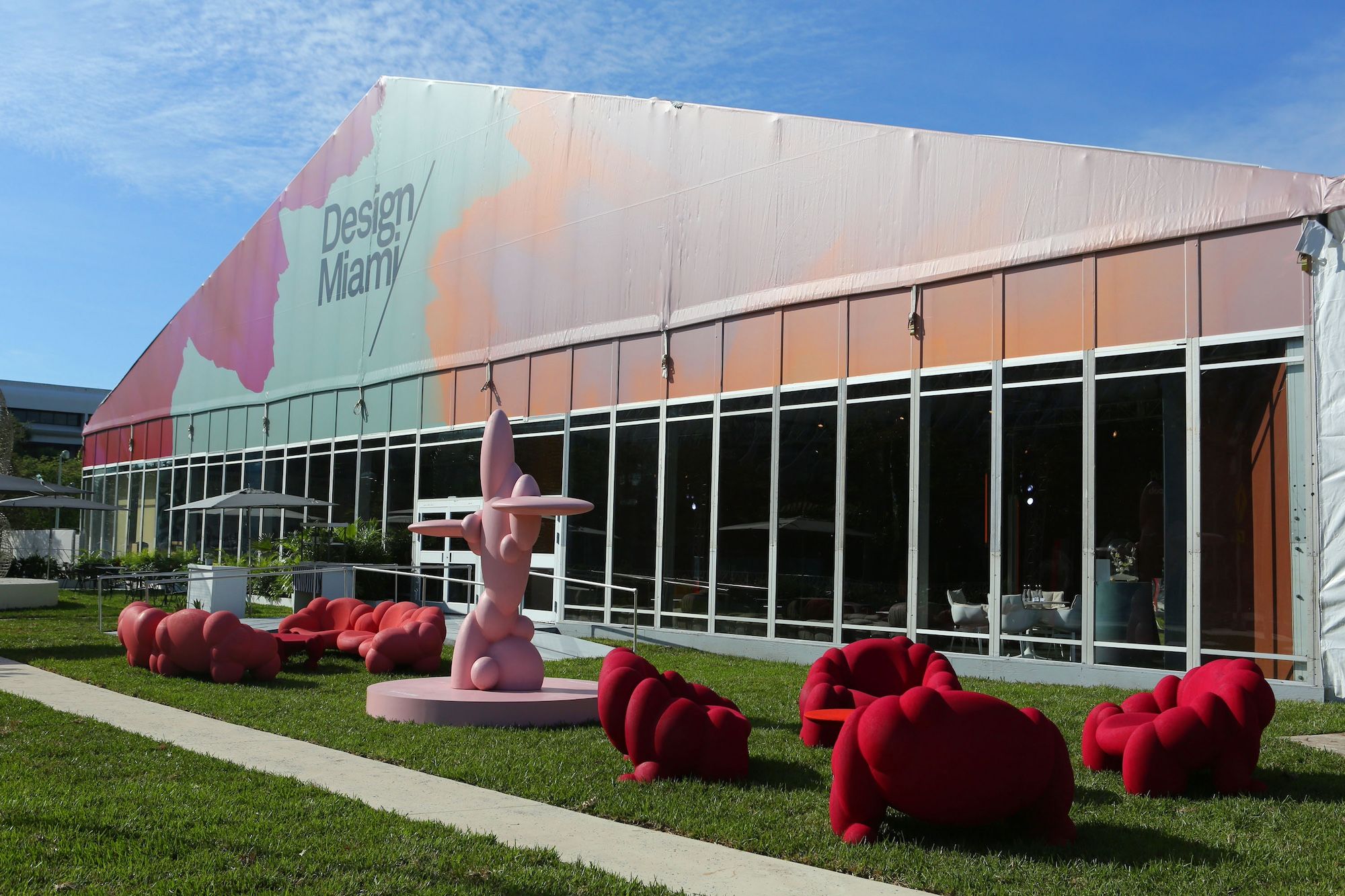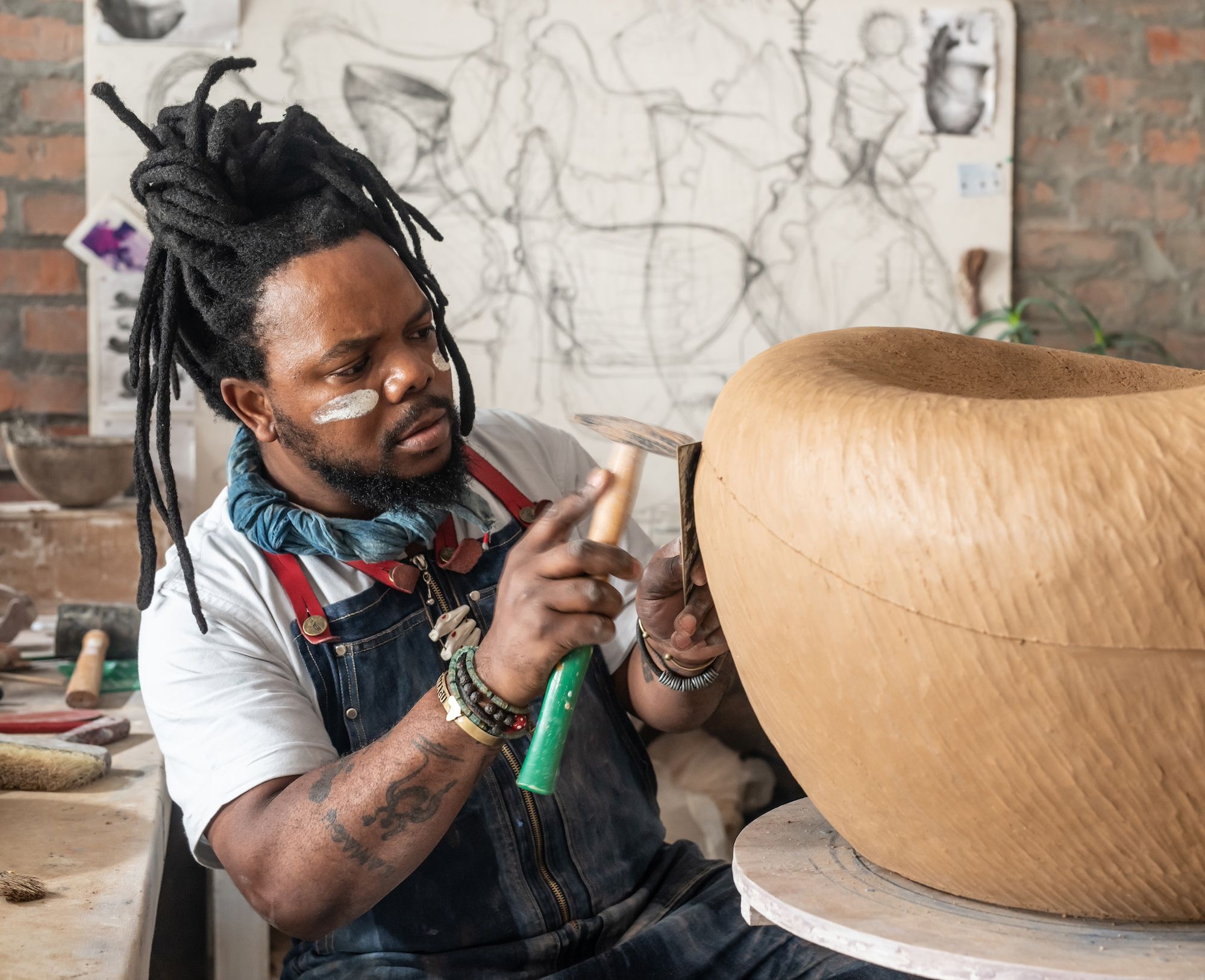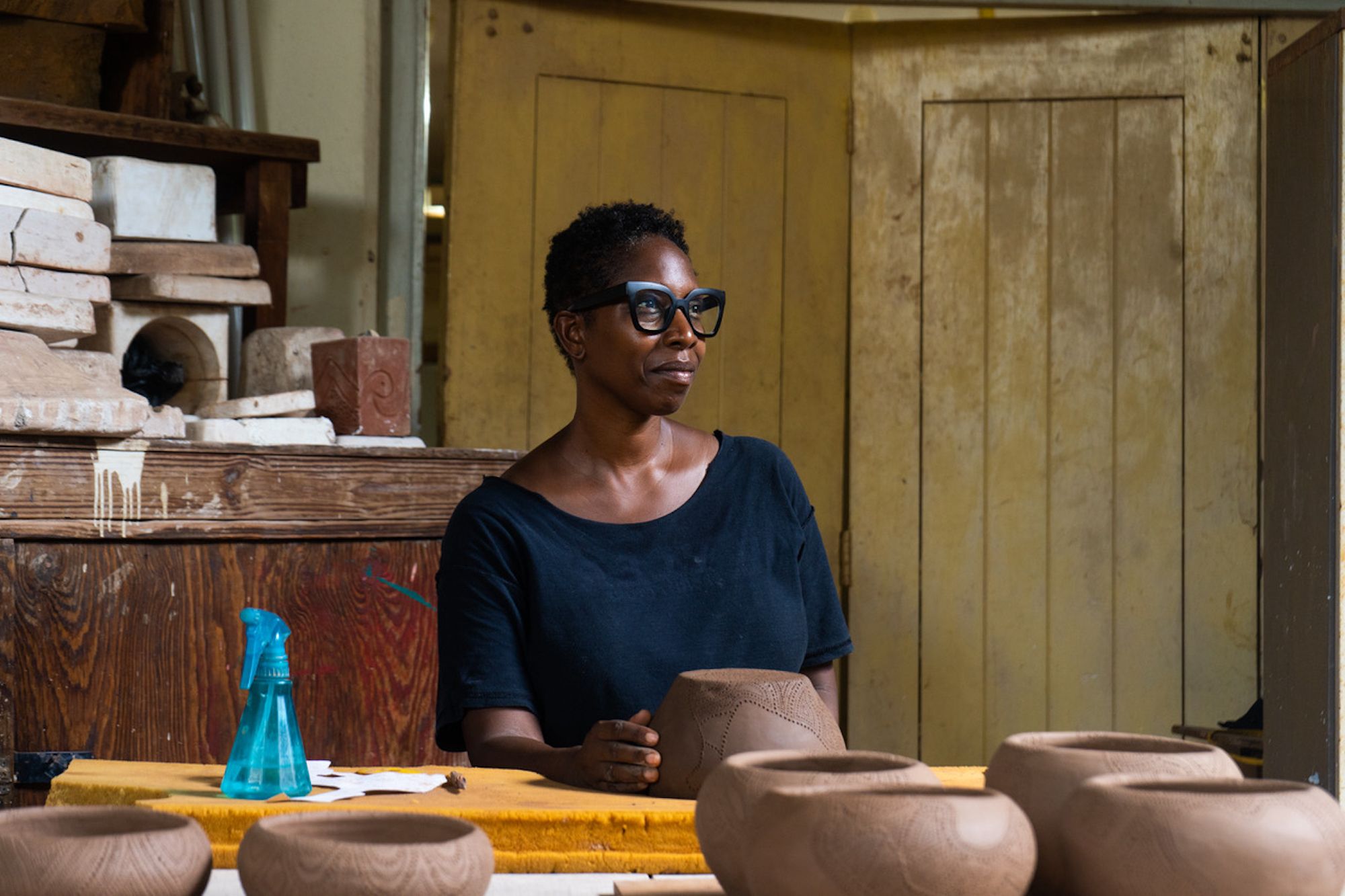SPOTLIGHT: WHERE WE STAND NOVEMBER 20 2023
by Anna Carnick
The Ukrainian designer reflects on design as a tool to uplift, honor, and resist
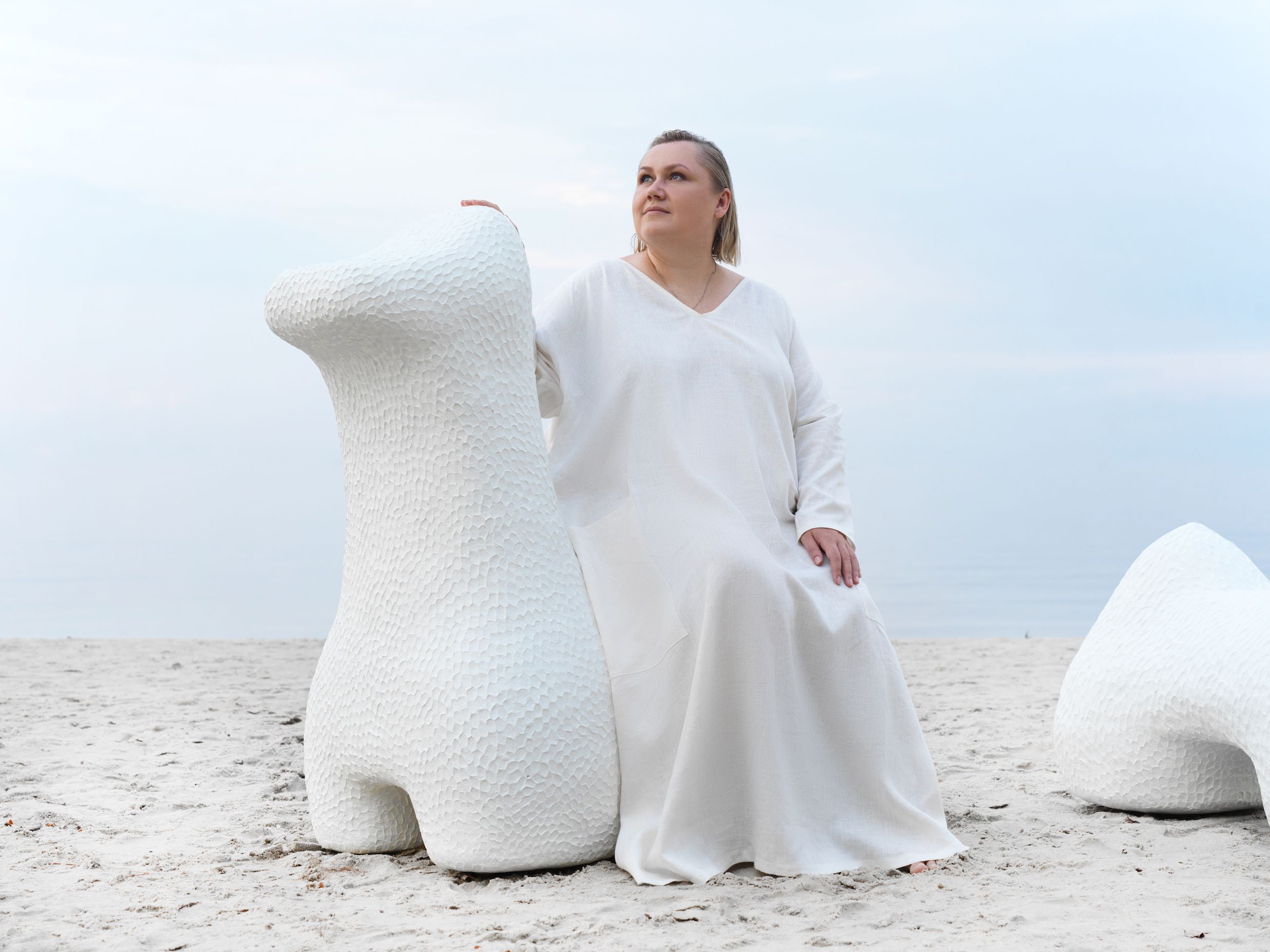
DESIGNER VICTORIA YAKUSHA WITH HER NEW COLLECTION, THE LAND OF LIGHT
Photo by Dima Kutsenko; Courtesy of Victoria Yakusha
To augment the Design Miami/ 2023 curatorial theme, Where We Stand, we’ve put together an editorial miniseries featuring interviews with exceptional creatives whose practices exemplify future-facing, socially engaged, and narrative-driven design approaches. These thought-provoking design thinkers all have works on view in the upcoming fair and, for this series, have responded to our queries with edifying insights into design’s role in strengthening our connections with one another—something people the world over could use a lot more of right about now.
For our debut installment, we speak with Ukrainian designer and architect Victoria Yakusha. In recent years, Yakusha has emerged as a charismatic global ambassador for Ukrainian design and culture, which she champions through her roles as the founder of both YAKUSHA studio and the FAINA design brand. Her award-winning practice draws deep inspiration from Ukrainian making traditions and heritage, fusing millenia-old crafts and lessons from the land with a contemporary design sensibility that embraces the storytelling power of design. As she has said, “In Ukraine, we're deeply connected to the earth. It's the foundational element in all my designs.”
Her signature approach, dubbed “live design,” advocates for spaces and objects imbued with natural materials and rich narratives that honor our connection to something greater than ourselves—both the natural environment and the larger tome of humankind.
Scroll on for Yakusha’s reflections on some of the questions animating the Design Miami/ 2023 Where We Stand theme.
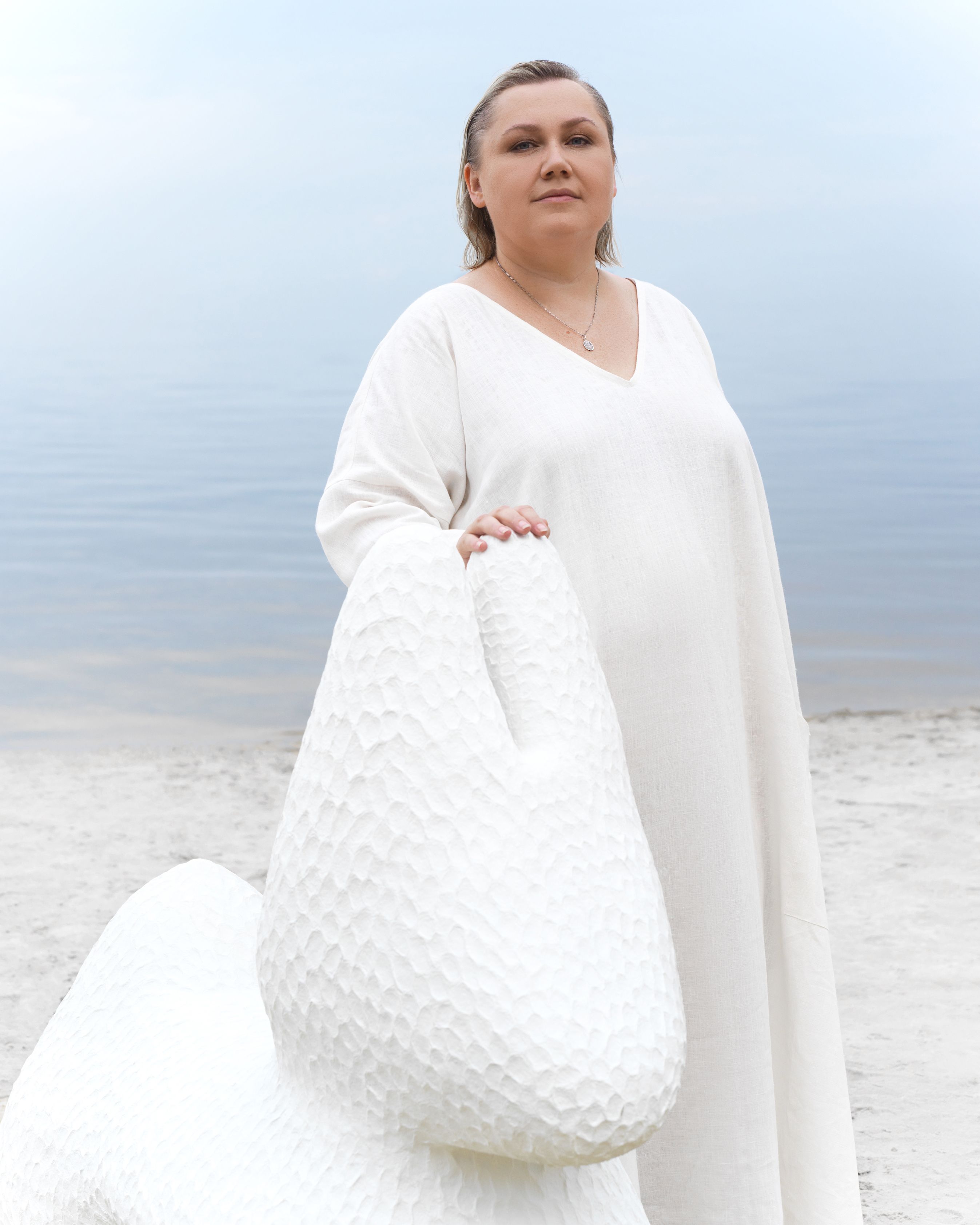
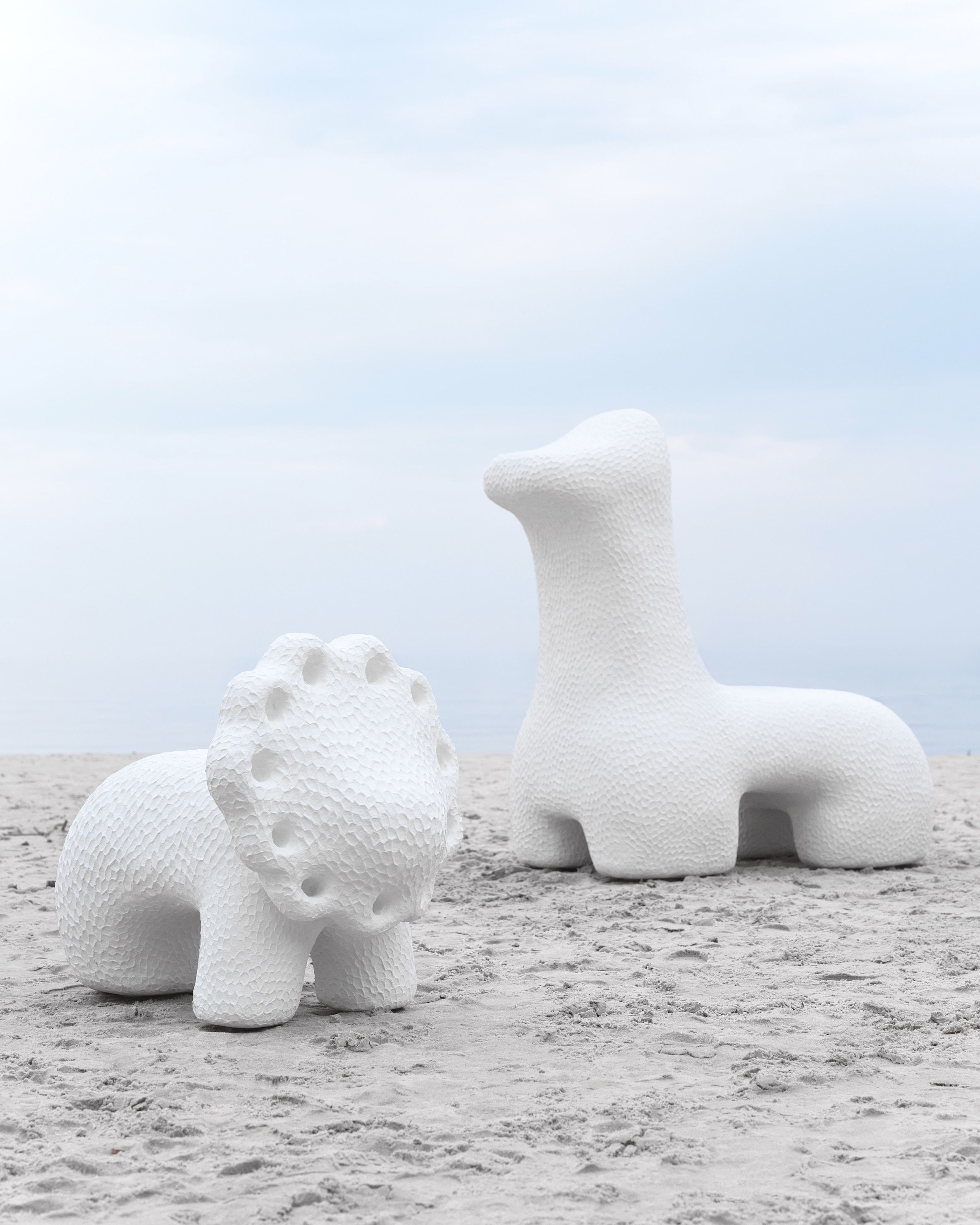
VICTORIA YAKUSHA AND HER NEW COLLECTION, THE LAND OF LIGHT
Photos by Dima Kutsenko; Courtesy of Victoria Yakusha
Anna Carnick/ How can design serve as a tool to support positive social change?
Victoria Yakusha/ The language of design can be used to tell stories that raise awareness—whether they honor heritage or point to the pollution of our oceans. In telling stories rooted in reality, they can encourage understanding and therefore social change.
AC/ What changes are most urgently needed in the way design is discussed and valued today?
VY/ I think it is very important that design is discussed as a discipline that not only solves functional issues, but also as a tool to encourage a reflection on values. Humanity, heritage, bravery, awareness—these and other virtues are very important, and we must pass them on to our children.
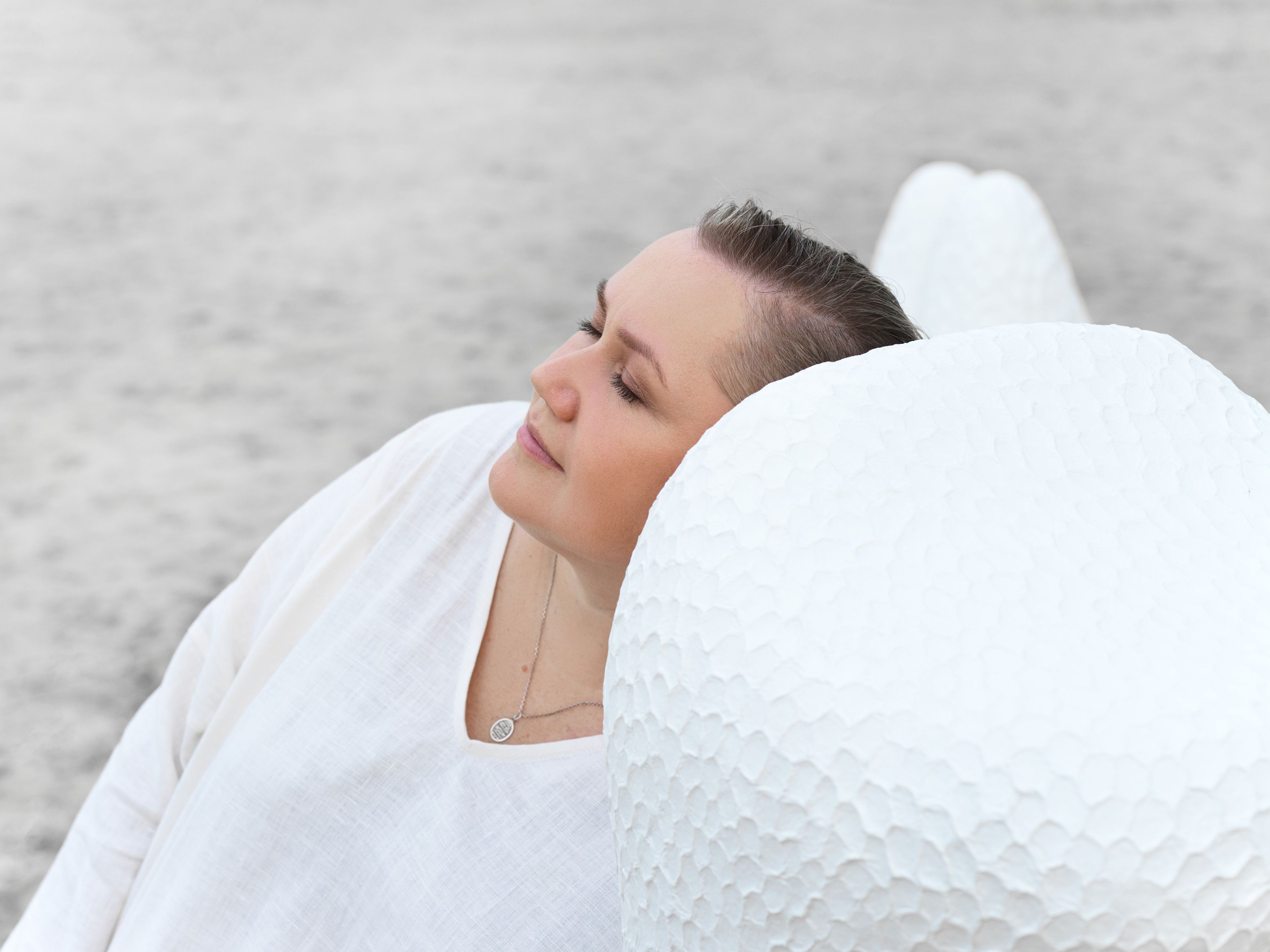
DESIGNER VICTORIA YAKUSHA
Photos by Dima Kutsenko, Courtesy of Victoria YakushaL
AC/ What role does storytelling play in your practice?
VY/ I approach the Faina brand, which I created in 2014, as a medium for storytelling. The goal of Faina, at its core, is to tell the world about Ukrainian traditions, culture, and nature using the language of design. In doing so, we reflect on our past and present, celebrating our traditions and unyielding spirit—in order to consider the best paths forward from this moment.
Through my designs, I share stories about the history of my country, but not only. I talk about values, about the kindness that we have lost, about relationships and how important it is to be yourself—concepts that people everywhere can relate to. The names of each object are carefully chosen to reflect the stories behind them, and I also started writing short poems recently to provide further context for my pieces.
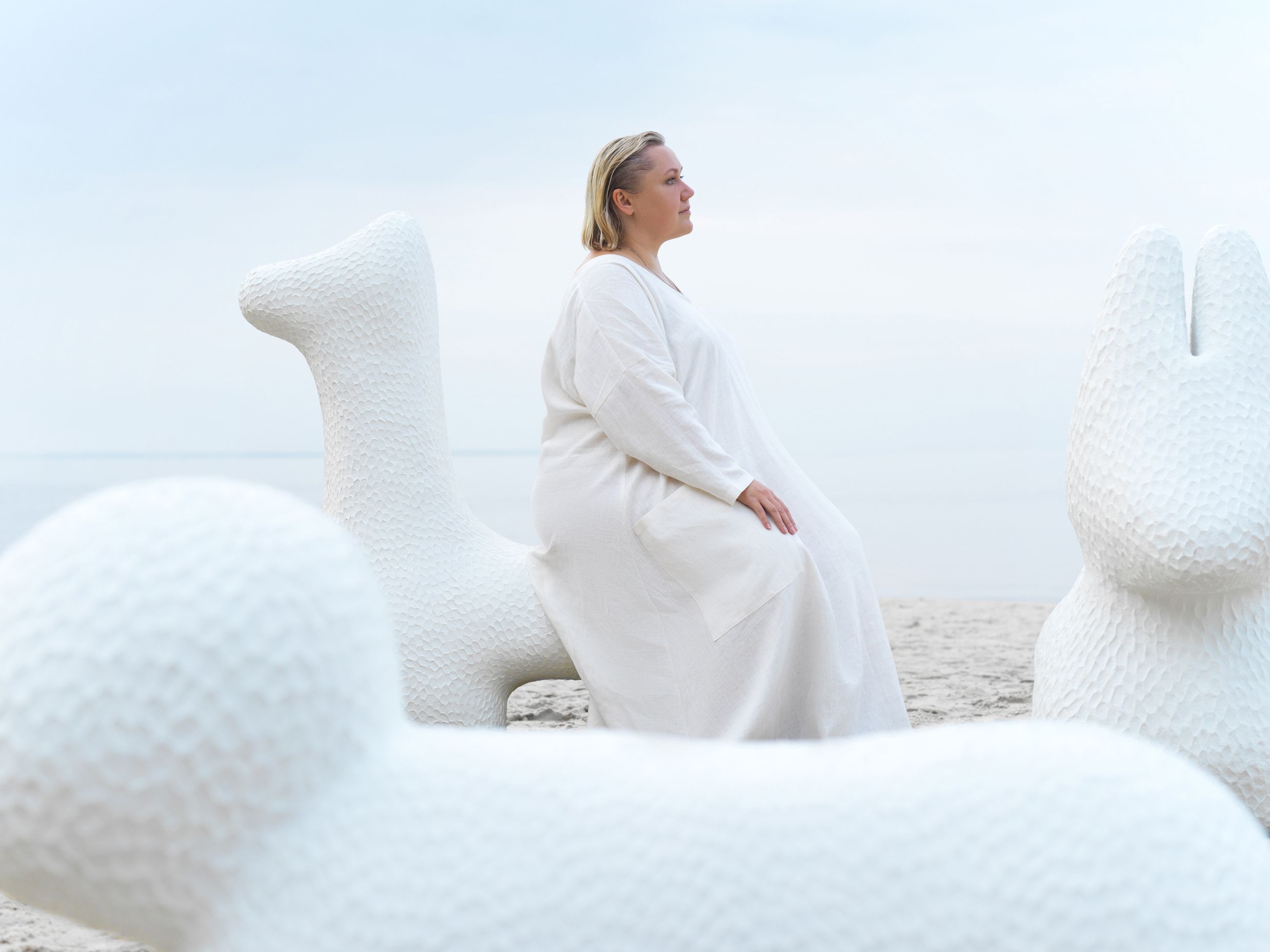
VICTORIA YAKUSHA AND THE LAND OF LIGHT COLLECTION
Photos by Dima Kutsenko; Courtesy of Victoria Yakusha
AC/ If you had to choose one object that demonstrates the storytelling power of design, which would it be and why?
VY/ I have two. First, our Bandura Vases are very popular works inspired by the difficult story of Ukrainian bandura musicians. Bandura are traditional folk instruments, and historically, the musicians who played them—many of whom were blind—walked with guides, often children, from one village to another to share the history of Ukraine through stories and music. They honored our culture and supported national awareness for years and years. The Bandura Vases are always presented as a pair, one representing the player and one for the small guide.
Recognizing the musicians’ role in celebrating Ukrainian cultural heritage, the Communist authorities carried out many efforts to repress them. One haunting story in particular stays with me. Multiple sources assert that in the 1930s, the Soviet government ordered bandura players from all over Ukraine to gather in Kharkov, supposedly for a conference—after which everyone, musicians and guides, were taken to the forest and killed. The Soviet government was afraid that the bandurists brought love of freedom to the masses; they feared the potential of Ukrainian identity, and looked to destroy it. These vases honor those musicians and their kind guides, the stories that they told, and our larger Ukrainian history.
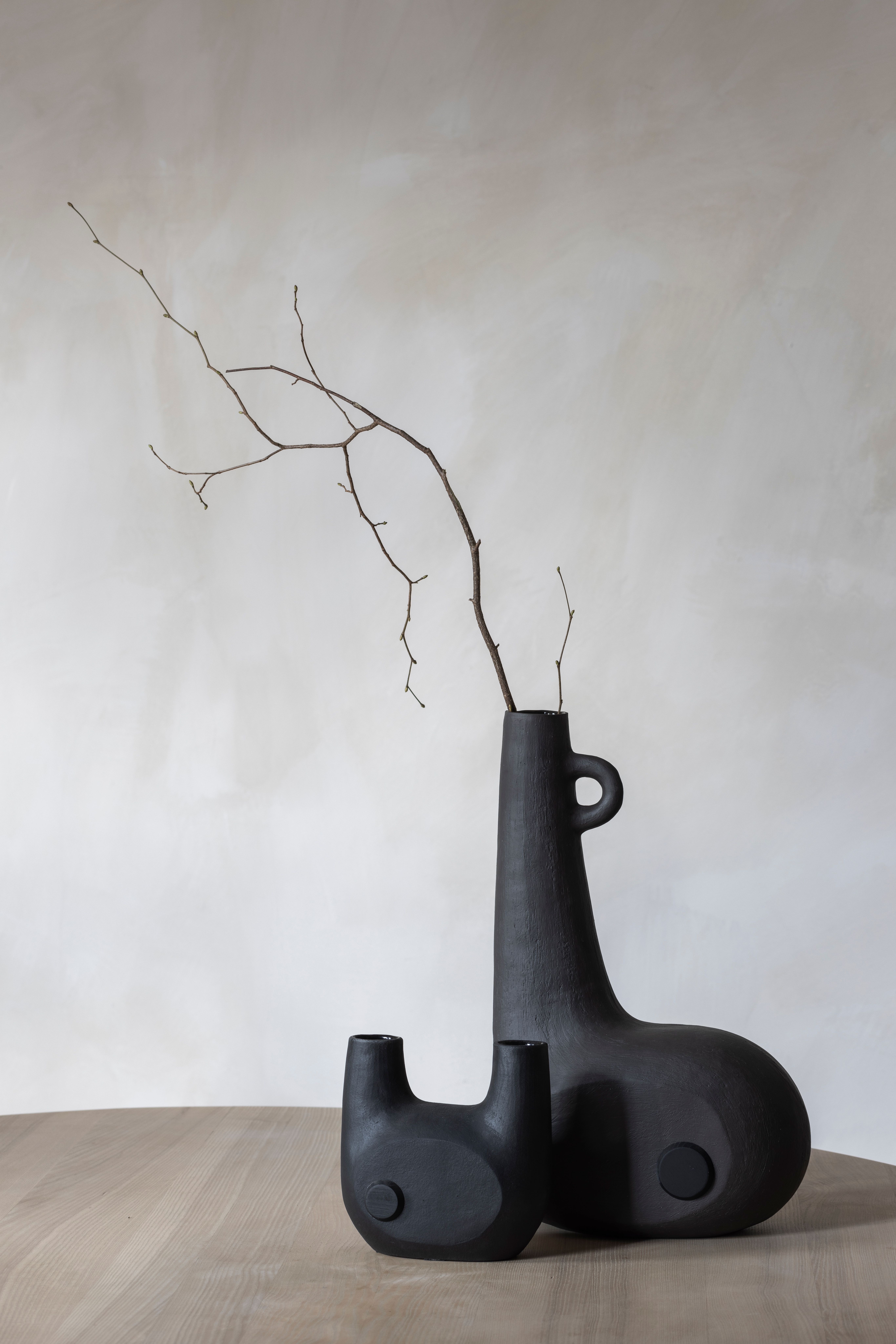
BANDURAS VASES FROM FAINA
Photo by Tijs Vervecken; Courtesy of FAINA
Second, the new work I’m bringing to Miami this year, The Land of Light, celebrates the spirit of the Ukrainian people through folklore-inspired animal forms that encourage people everywhere to look within themselves for strength and light.
In times of darkness, we must embrace our communities, our heritage, and our connection to all the creatures of the earth as a way to remind us of our own internal luminosity. I know this well from my own experience. When the Russians invaded Ukraine, I was in Belgium, where I am now based, but my team, my production partners, my friends and family, my mother, were all still in Ukraine. So was my beautiful house, located in a pine forest in Bucha—where there have since been many victims—and Russian tanks came to my home and destroyed it. Some people could barely cope with the resulting depression, some went to the army; it was a moment when it seemed like the whole world was collapsing around us.
At that moment, I created the Land of Light collection. I looked within, and these mythical animals appeared in my mind’s eye like guides.: Neboshyi, with his long neck such that it goes beyond the clouds to see dreams. Bagatonig has many legs, to help us move forward and rid us of fear. Sontsehryv brings joy, and Dolgovukh, with his long hears, listens to our thoughts very well. Each was designed to offer comfort, to help you find yourself again. So the Land of Light is not just about Ukraine, it is for anyone in the world facing challenges. It is meant as a symbol of strength and light.
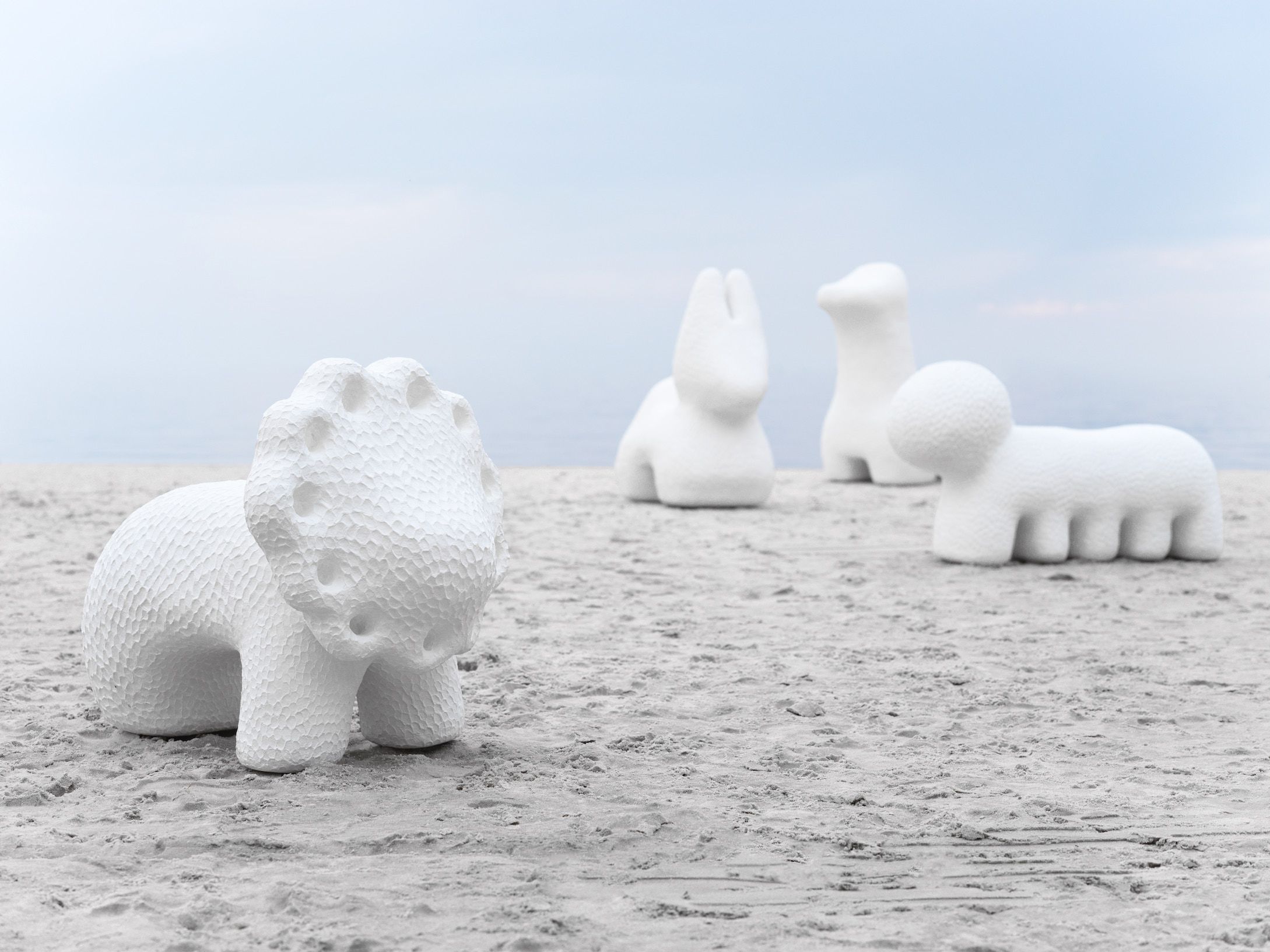
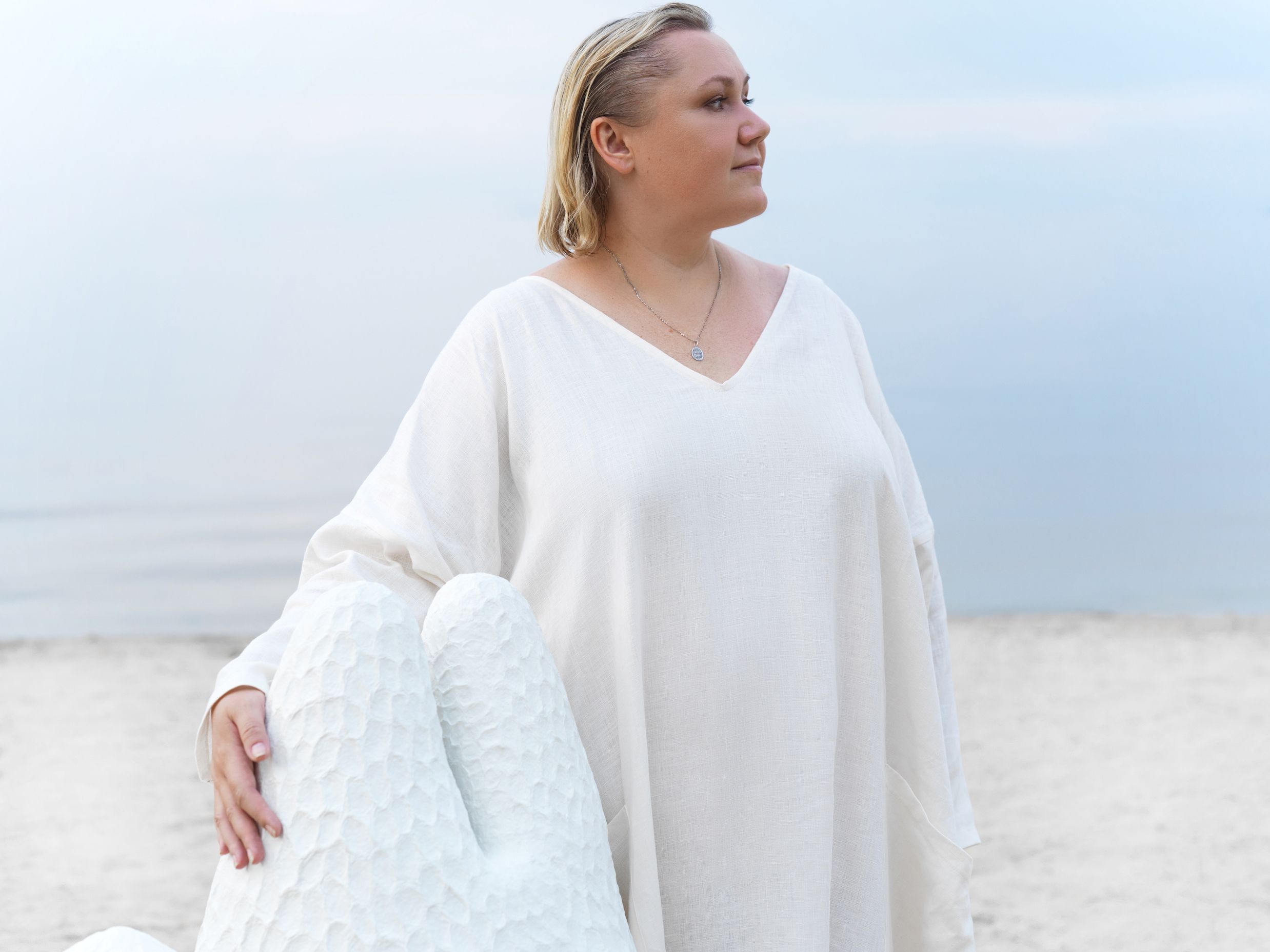
YAKUSHA'S LAND OF LIGHT COLLECTION
Photos by Dima Kutsenko; Courtesy of Victoria Yakusha
Here is the poem I’ve written for the collection:
The Land of Light
Everything around is hurting
As if in darkness
Questioning
Why and what’s next
But there’s a bright light
Quietly flickering from within
A radiance
___
Although invisible yet you feel
This Radiance expanding
Making everything around lighter
Providing strength
And unifying others
This is the land of light
Stay tuned for more Where We Stand interviews in the coming days.
This editorial series was conceived and curated by Anna Carnick and Wava Carpenter of Design Miami and Anava Projects as an exploration of the Design Miami/ 2023 curatorial theme Where We Stand.
About Where We Stand: Reflections on Place, Purpose & Community : Objects are anthropological markers of time and place. Through material, process, and form, every object tells a story—not only of the makers and societies responsible for their creation, but also of the human experience more broadly. Responding to the complexities that define our current timeline, Where We Stand explores the storytelling power of design and, in turn, its potential for nurturing connectivity. As we celebrate objects from around the globe inspired by place, identity, and heritage, we hope to prompt questions—and potential answers—to help us navigate this complex, polarized period in history: How do objects narrate human progress? And how can we harness the beauty and power of our most intimate, rooted bonds, individually and collectively, to realize a more perfect world to call our own?
Click here to purchase tickets to attend Design Miami/ 2023, open to the public December 6-10 at Convention Center Drive & 19th Street in Miami Beach.
